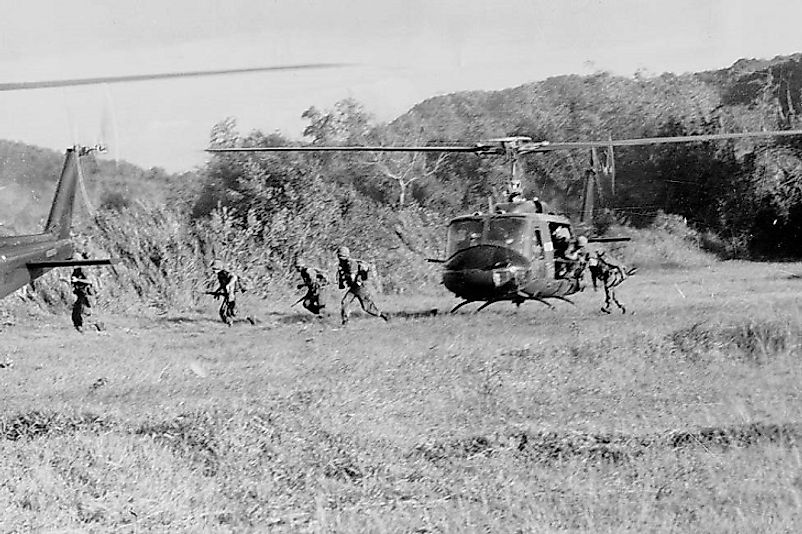Battle Of Ia Drang - Vietnam War

5. Background
The battle of Ia Drang was an engagement of the Vietnam War. Fought between November 14th and 18th of 1965, around the hills surrounding the valley of Ia Drang, on the Central Highlands of South Vietnam. The battle was the culmination of Operation Silver Bayonet I, a combined American-South Vietnamese offensive to relieve the besieged special forces camp at Plei Mei. With the siege of Plei Mei being lifted on October 25th, the American forces launched a close pursuit of the North Vietnamese forces to stop them from regrouping and gathering enough strength to attack Plei Mei again.
4. Makeup
The Americans divided their forces to launch a pincer attack against the NVA's positions. Lieutenant Colonel Harold Moore commanded the 1st Battalion that would assault Landing Zone X-Ray, while Lieutenant Colonel Robert McDade took landing Zone Albany with the 2nd Battalion. Both battalions were part of the 7th Cavalry Regiment and were pioneers in this new style of helicopter-borne warfare. Defending the Chu Pong Hills was General Chu Huy Man, with three well concealed North Vietnamese Army (PAVN) regiments totaling 2,500 men, in comparison to the 1,000-man strength of the Americans. Faulty American intelligence had identified this force as a single PAVN regiment, and this mistake would have serious consequences for the Americans.
3. Description
The American forces were penetrating into the communist guerrillas' bases, deep into enemy territory. To carry out operations so far away from its ground supply lines, they used air power to support their forces. Pioneering future helicopter combat operations, the 3rd Brigade used recently developed helicopter tactics to carry out a helicopter-borne assault over their objectives. The North Vietnamese, owing to their guerrilla strategy and the fact that they lacked heavy weapons other than mortars, relied on surprise and mobility to overwhelm their enemy. The Ia Drang valley is surrounded by hills covered with thick vegetation, and was an ideal place to ambush a force landing in open ground. On the morning of November 14th, Moore's 1st Battalion landed at the foot of Chu Pong hills, and at noon of the same day he was attacked by the PAVN 3rd Regiment. The fight lasted into the night with Moore calling artillery strikes to avoid being overrun. The next morning the PAVN's 33rd Regiment joined the fight but constant air strikes forced the communists to retreat. While this was happening, in LZ Albany the 2nd Battalion was ambushed and suffered massive losses.
2. Outcome
On November 18th, the Vietnamese retreated after having suffered 834 confirmed kills, and another 1,000 presumed dead or wounded. The Americans suffered 234 killed and 250 wounded. Both sides claimed victory.
1. Significance
The Battle of Ia Drang was the first major military operation of the United States in the Vietnam War. The heavy casualties suffered in Ia Drang shocked the public opinion and the high command alike. Even so, Ia Drang didn't have the effect of deterring further American participation. In fact, the contrary happened as the U.S. immediately made plans to escalate their involvement. The White House became convinced that South Vietnam needed more military help than ever, and that to leave her alone would see the country collapse under pressures from the perceived communist menace to the north, therefore setting into motion increased American involvement in the conflict. For his valiancy in the Battle of Ia Drang, where he suffered wounds while single-handedly engaging an enemy position, Walter Joseph Marm, Jr. was awarded the Medal of Honor, the highest U.S. Military distinction.







